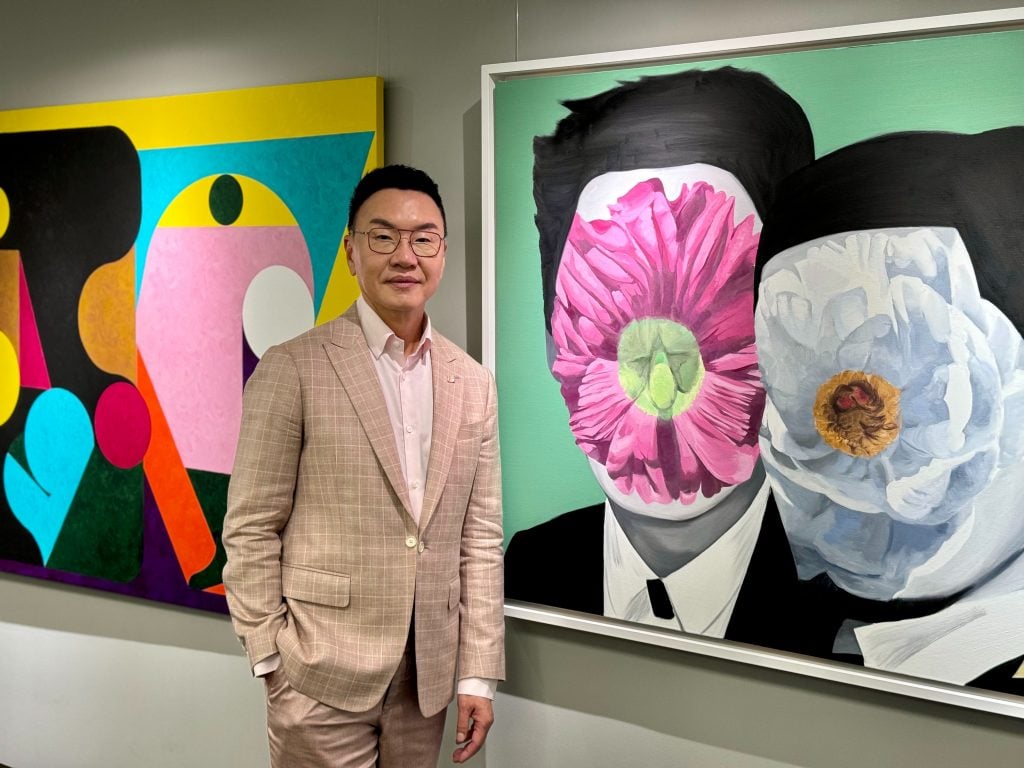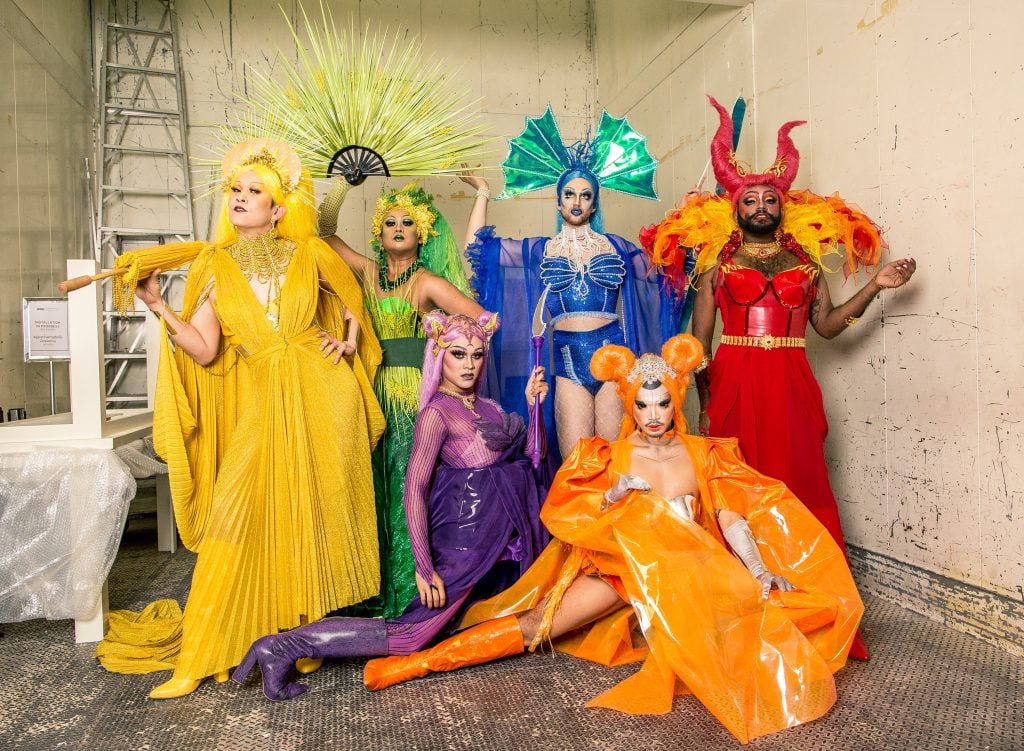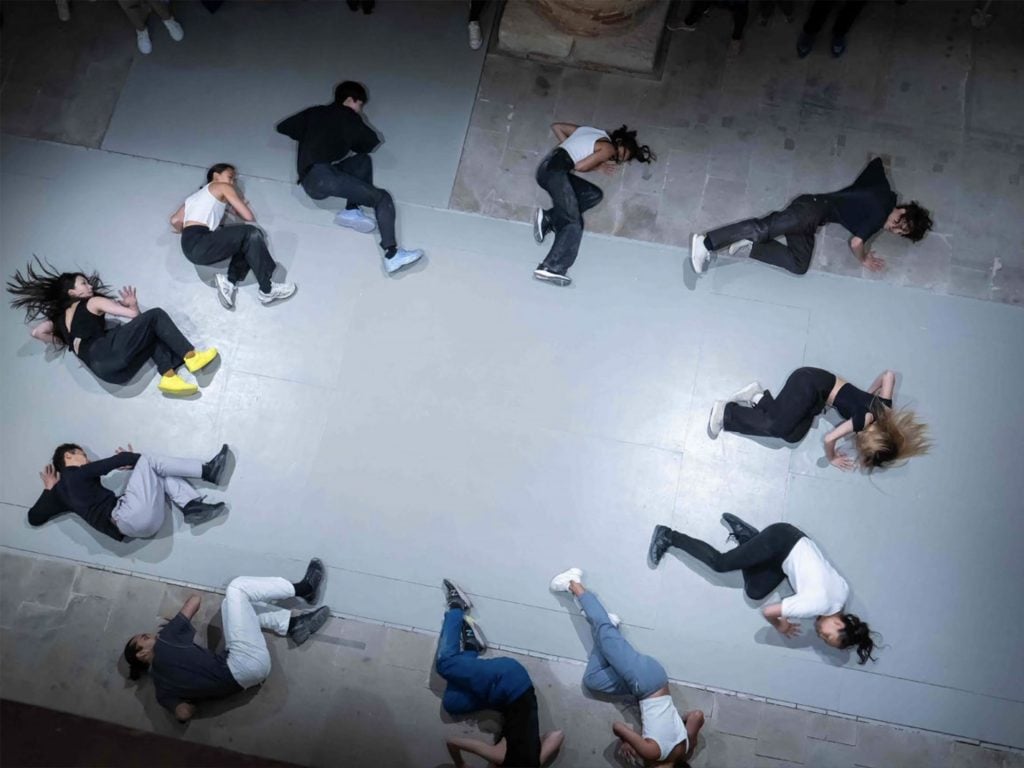Market
Collector Patrick Sun on His Trailblazing Support for LGBTQIA+ Art in Asia
'I always brace myself for attacks or criticisms, but so far, we have been very lucky,' the Hong Kong real estate developer said.

'I always brace myself for attacks or criticisms, but so far, we have been very lucky,' the Hong Kong real estate developer said.

Patrick Sun

The View From is excerpted from The Asia Pivot, Artnet Pro’s biweekly members-only newsletter providing mission-critical analysis, insights, and exclusive intelligence on developments in Asia’s art markets, with a focus on business opportunities and challenges. Subscribe here to receive it directly to your inbox.
Born in Hong Kong, Patrick Sun is a real estate developer and has been collecting art since 1988. In 2014, he founded the nonprofit Sunpride Foundation, which aims to “foster a stronger, healthier, and more equitable world” for the LGBTQIA+ community across Asia through art. The foundation now has about 300 works in its collection.
I have been in this industry for 10 years, and I often ask myself if I have done enough. But in retrospect, the three “Spectrosynthesis” exhibitions we have staged across Asia under the banner of the Sunpride Foundation—in 2017 at the Museum of Contemporary Art in Taipei, as the first LGBTQ-themed museum show in Asia, in 2019 at the Bangkok Art and Culture Centre, and in 2022 at Tai Kwun in Hong Kong—were pioneering shows in the region.
I always brace myself for attacks or criticisms, but so far, we have been very lucky. These exhibitions, showcasing our collection and new commissions of LGBTQIA+-themed works by artists from the region, as well as loans from artists, other institutions and collections, have been very well received. Maybe we are riding on the general wave of more acceptance, at least toward the queer community in this part of the world. But I always believe that change does not come from one person or one event. It is a concerted effort. So, what we do is a small way of contributing to this general movement.

Joshua Serafin, Land of a Thousand Rainbows ( 2019), performance and video by Ming Wong, “Spectrosynthesis II” opening performance at the BACC. Image courtesy of Sunpride Foundation.
We will continue with our mission, which will keep me occupied for the next five to six years as we are planning for the fourth and fifth iterations of our “Spectrosynthesis” exhibitions. They will take place in Asia. I am also honored when institutions from America and Europe show interest in bringing our exhibition there.
Changes are also prevalent in Asia’s art-collecting culture. Local collectors and museums are expanding their focus from art from the region to more international art, which is only natural, considering the number of art fairs we have in the region. International galleries’ presence in the region also has an impact on local collectors. Some curators have told me that institutions are branching out to collecting more contemporary works, instead of just focusing on the big names.
There is greater emphasis on young, emerging artists, which I think is very healthy. For example, three years ago, I joined the M+ Council for New Art, which focuses on artists aged 40 or below. Throughout this time, I noticed that M+ has been making a huge effort to support these younger artists.

Sadao Hasegawa, Ground Spider-Tsuchigumo (1981). Image courtesy of Sunpride Foundation.
Another trend I am pleased to see is the improvement of the overall presentation of Asian artists in the West—looking at Asian aesthetics from an Asian perspective, rather than trying to define it with a Western lens. More attention has been paid to ink art, too. The notable presence of Asian artists at the Venice Biennale this year is remarkable. I had the privilege to participate as a donor for Isaac Chong Wai’s presentation of Falling Reversely at the Arsenale. It was a wonderful experience. Joshua Serafin, also featured in the main exhibition at the Arsenale, was involved in all three of the “Spectrosynthesis” exhibitions.
I also notice the significant transformation of the narratives in queer art from Asia. Artists from an older generation, such as Sadao Hasegawa (1945–99) from Japan, focused on homoerotic art, such as images of the male body. Works by artists from those days are more introspective. Today, artists look at broader contemporary topics, addressing social and political issues in a conceptual manner. Isaac’s Venice piece, for example, was inspired by Asian hate, and the work he presented at our show in Hong Kong was about distance in human relationships.

Isaac Chong Wai, Falling Reversely (2024), 60th Venice Biennale. Image courtesy of Sunpride Foundation.
Indeed, art also serves as an important lens to a culture or society for those from the outside. The focus on the exhibition in Hong Kong, for example, was not only from the queer community. People were worried about how Hong Kong has changed since the social incidents in 2019. But I believe many of them are pleasantly surprised to see a show with this challenging theme hosted in the city. In fact, there has been progress in Hong Kong’s efforts to accommodate the LGBTQIA+ community, such as allowing people in same-sex relationships to use dependent visas and receive subsidized-housing benefits. Other places, such as Taiwan and Thailand, now recognize same-sex marriages. The world does not change overnight. We can take one little step at a time.
—As told to Vivienne Chow